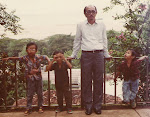| In the US, Gaza is a different war | ||||||
| | ||||||
| By Habib Battah
| ||||||
|
The images of two women on the front page of an edition of The Washington Post last week illustrates how mainstream US media has been reporting Israel's war on Gaza. On the left was a Palestinian mother who had lost five children. On the right was a nearly equally sized picture of an Israeli woman who was distressed by the fighting, according to the caption. The Israeli woman did not appear to be wounded in any way but also wept. Arab frustration To understand the frustration often felt in the Arab world over US media coverage, one only needs to imagine the same front page had the situation been reversed. If an Israeli woman had lost five daughters in a Palestinian attack, would The Washington Post run an equally sized photograph of a relatively unharmed Palestinian woman, who was merely distraught over Israeli missile fire? When the front page photographs of the two women were published on December 30, over 350 Palestinians had reportedly been killed compared to just four Israelis. Like many major news organisations in the US, The Washington Post has chosen to cover the conflict from a perspective that reflects the US government's relationship with Israel. This means prioritising Israel's version of events while underplaying the views of Palestinian groups. For example, the newspaper's lead article on Tuesday, which was published above the mothers' photographs, quotes Israeli military and civilian sources nine times before quoting a single Palestinian. The first seven paragraphs explain Israel's military strategy. The ninth paragraph describes the anxiety among Israelis, spending evenings in bomb shelters. Ordinary Palestinians, who generally have no access to bomb shelters, do not make an appearance until the 23rd paragraph. To balance this top story, The Washington Post published another article on the bottom half of the front page about the Palestinian mother and her children. But would the paper have ever considered balancing a story about a massive attack on Israelis with an in-depth lead piece on the strategy of Palestinian militants? Major US television channels also adopted the equal time approach, despite the reality that Palestinian casualties exceeded Israeli ones by a hundred fold. However, such comparisons were rare because the scripts read by American correspondents often excluded the overall Palestinian death count. Take the opening lines of a report filed by NBC's Martin Fletcher on December 30: "In Gaza two little girls were taking out the rubbish and killed by an Israeli rocket - while in Israel, a woman had been driving home and was killed by a Hamas rocket. No let up today on either side on the fourth day of this battle." Omitted from the report was the overall Palestinian death toll, dropped continuously in subsequent reports filed by NBC correspondents over the next several days. ABC news, for example, regularly introduced events in Gaza as "Mideast Violence". And Like NBC, reporters excluded the Palestinian death toll. There was no parallel telling of the Palestinian perspective, and no mention of any damages to Palestinian lives, although news agencies that day had reported five Palestinians dead. In fact, the Israeli government view typically went unchallenged on major US networks.
Such an episode occurred on a December 30 broadcast of the MSNBC show, Morning Joe, during which host Joe Scarborough repeatedly insisted that Israel should not be judged. The blame rested on the Palestinians, he concluded, connecting the Gaza attacks to the Camp David negotiations of 2000. "They gave the Palestinians everything they could ask for, and they walked away from the table," he said repeatedly. According to guest Dan Bartlett, a former White House counsel, the Palestinian leadership had made it "very clear" that they were uninterested in peace talks. Columnist Margaret Carlson also joined the show, agreeing in principal that Hamas should be "crushed" but voicing concern over the cost of such action. Arab audiences saw a different picture altogether. Rather than mulling Israel's dilemma, the Arab news networks captured the air assault in chilling detail from the perspective of its victims. The divide in coverage was staggering. For US networks, the bombing of Gaza has largely been limited to two-minute video packages or five minute talk show segments. This has usually meant a few snippets of jumbled video: explosions from a distance and a momentary glance at victims; barely enough time to remember a face, let alone a personality. Victims were rarely interviewed. The availability of time and space, American broadcast executives might argue, were mitigating factors.
For hours on end, live images from the streets of Gaza are beamed into Arab households. The cycle begins with rooftop-mounted cameras, capturing the air raids live. After moments of quiet, thunderous bombing commences and plumes of smoke rise over the skyline. Then, anguish on the streets. Panicked civilians run for cover as ambulances careen through narrow alleys. Rescue workers hurriedly pick through the rubble, often pulling out mangled bodies. Fathers with tears of rage hold dead children up to the cameras, vowing revenge. The wounded are carried out in stretchers, gushing with blood. The coverage extends beyond Gaza. Unlike the US networks, which are often limited to one or two correspondents in Israel, major Arab television channels maintain correspondents and bureaus throughout the region. As angry protests take place on a near daily basis, the crews are there to capture the action live. The inclusion of Palestinian voices is not unique to Arab media. On a number of international broadcasters, including BBC World and CNN International, Palestinian leaders and Gazans in particular are regularly heard. And the Palestinian death toll has been provided every day, in most broadcasts and by most correspondents on the ground. Reports are also filed from Arab capitals. On some level, the relatively small American broadcasting output can be attributed to a general trend in downsizing foreign reporting. But had a bloodbath on this scale happened in Israel, would the networks not have sent in reinforcements? For now, the Israeli viewpoint seems slated to continue to dominate Gaza coverage. The latest narrative comes from the White House, which has called for a "durable" ceasefire, preventing Hamas terrorists from launching more rockets. Arab channels, however, see a different outcome. Many have begun referring to Hamas, once controversial, as simply "the Palestinian resistance". Habib Battah is a freelance journalist and media analyst based in Beirut and New York. (From Al Jazeera, January 5 2009) |
Tuesday, January 6, 2009
PALESTIN
Subscribe to:
Post Comments (Atom)











.jpg)



.jpg)





.jpg)
.jpg)
.jpg)
.jpg)
.jpg)
.jpg)
.jpg)













































No comments:
Post a Comment